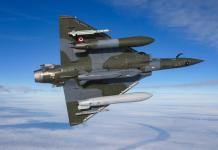India-US ties received a shot in the arm when the two countries inked the Master Ship Repair Agreement, allowing US warships to access repair services at Indian ports.
So far, only the non-commissioned ships of the US Navy (recognized by the prefix USN) have been repaired at the Indian shipyard. Still, the two partners are also contemplating whether the commissioned warships of the US Navy (USS) can be refurbished at the port.
In a two-day Defense News Conclave organized by the US consulate in Kolkata and Indian think tank CUTS International, US Ambassador to India Eric Garcetti expressed hopes that relations between the two countries would improve to the point where US warships would come to India for repair.
With an eye on China in the Indo-Pacific, the US has been working on making India a major hub for the repair and maintenance of the US Navy warships. So far, the Auxiliary ships have undergone maintenance; in the future, destroyers, amphibious warships, and other big ships will also come to India for refurbishment. Nuclear-powered ships, like aircraft carriers and submarines, are not part of this vision.
US warships are getting fewer steaming hours because of growing maintenance delays and costs. This has been a troubling trend as the US struggles to keep pace with China’s growing fleet and faces other adversaries at sea, including Russia.
With a paltry budget of US $13.9 billion for the financial year 2024, the US Navy is facing the difficult task of meeting its repair needs. A Government Accountability Office report released in 2023 found that the Arleigh-Burke class destroyer, the Navy’s mainstay surface ship, averaged 26 days of depot maintenance delay in fiscal 2021.
Operating and support costs grew by about $2.5 billion across 10 ship classes while the number of propulsion hours in which ships were operating or training dipped during a 10-year period that ended in 2021.
The American surface warship maintenance is done by two private shipyards – General Dynamics National Steel and Shipbuilding Company and BAE Systems Ship Repair. “If one of these suppliers decided to exit the market, the Navy would need time to find alternate providers,” a RAND Corporation report noted.
“We want to come to India to fix our ships, see our aircraft work,” Ambassador Garcetti said while adding that “in case of war, we don’t have to worry about refueling our ships.”
India, sitting on the Malacca Strait, the entry point of the South China Sea, will play a crucial role in sustaining the operations of the Western countries in the region. Indian experts have suggested developing the archipelago of Andamans and Nicobar as one of the hubs. The islands sit on the mouth of Malacca Strait, an important entry point to the South China Sea. The US has been using the islands for ‘Gas and Go.’
In 2020, at the peak of India-China tensions, the US Navy’s long-range anti-submarine warfare and maritime surveillance aircraft, the P-8 Poseidon, carried out its maiden refueling from India’s strategic base in the Andaman and Nicobar Islands. The aircraft then continued on its onward journey.
American Warships Refurbished In India
In 2023, the US Navy signed a five-year master shipyard repair agreement (MSRA) with Larsen and Toubro (L&T) shipyard in Chennai. L&T shipyard in Kattupalli, near Chennai on the East Coast, has been undertaking voyage repairs of the Military Sealift Command vessels and has already repaired US Navy ships. The first warship, USNS Salvor, has already arrived at the shipyard to undergo steel repairs.
In April 2024, India opened its second shipyard for the refurbishment of the US Navy warships. The Cochin Shipyard Limited (CSL), which will be manufacturing India’s second indigenous aircraft carrier, will be undertaking repairs of US Navy warships.
Former Indian Navy Chief Admiral Karambir Singh (retired) said that the US Naval warships (USS) need to be refurbished in India. “It is being discussed,” the Admiral said. Captain Sarabjeet Parmar (retired), another officer of the Indian Navy, concurred that the step would go a long way in building trust between the two countries.
The US is wary of sending commissioned warships for repair to India, considering the sensitivity of the technology.

Containing Chinese Aggression In Indo-Pacific
Without naming China, Ambassador Garcetti contended that India and the US alone will not be able to keep pace with the growing threats in the Indo-Pacific. “In three years, we have seen countries which do not respect sovereign borders.”
Two decades ago, the US defense sales to India were almost zero. Now, the two countries are discussing joint production of major systems. Today, the US accounts for 10 percent of India’s defense imports (by value). India is the world’s largest defense importer, accounting for 10 percent of global arms imports from 2008 to 2023.
Now, India has contracted for nearly US $20 billion worth of US-origin military equipment since 2008, according to the Defense Department. Most of the deals with the US have been made through the Foreign Military Sales route.
India-US defense ties have seen a steep upward trend, but they have been held back by New Delhi’s attempts to maintain its strategic autonomy. India has asserted this by courting Russia.
Ambassador Garcetti underscored that strategic autonomy should not be used for the sluggish pace of movement in defense ties between the two countries. “India likes strategic autonomy. But in conflicts, there is no such thing as strategic autonomy.”
Emerging as India’s number one training partner, the Ambassador hopes that the two countries will be able to fight side by side should the need arise.
- Ritu Sharma has been a journalist for over a decade, writing on defense, foreign affairs, and nuclear technology.
- The author can be reached at ritu.sharma (at) mail.com
- Follow EurAsian Times on Google News




